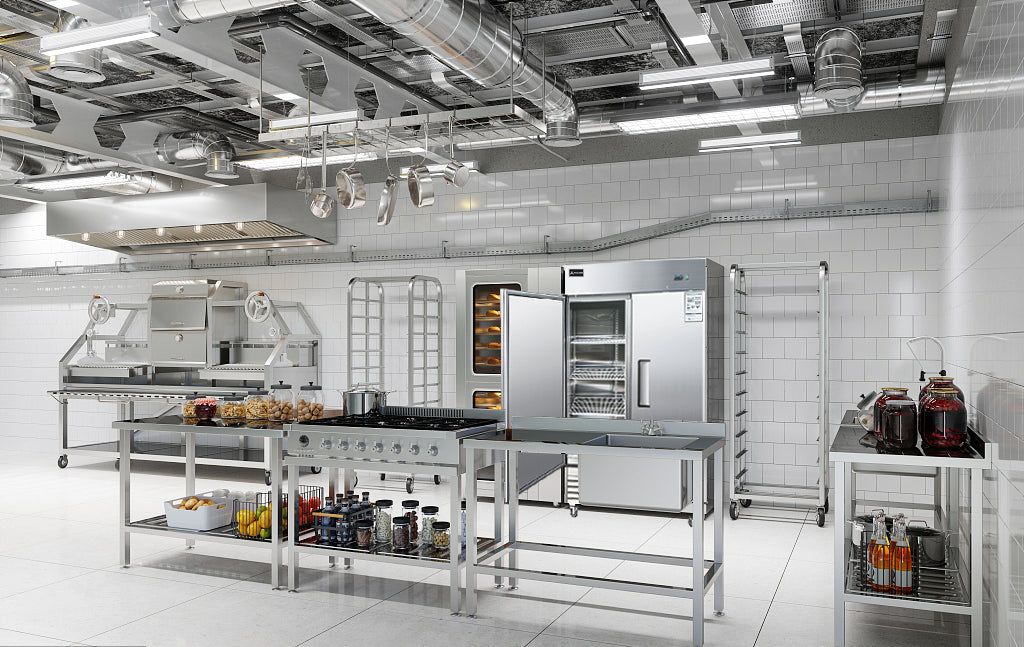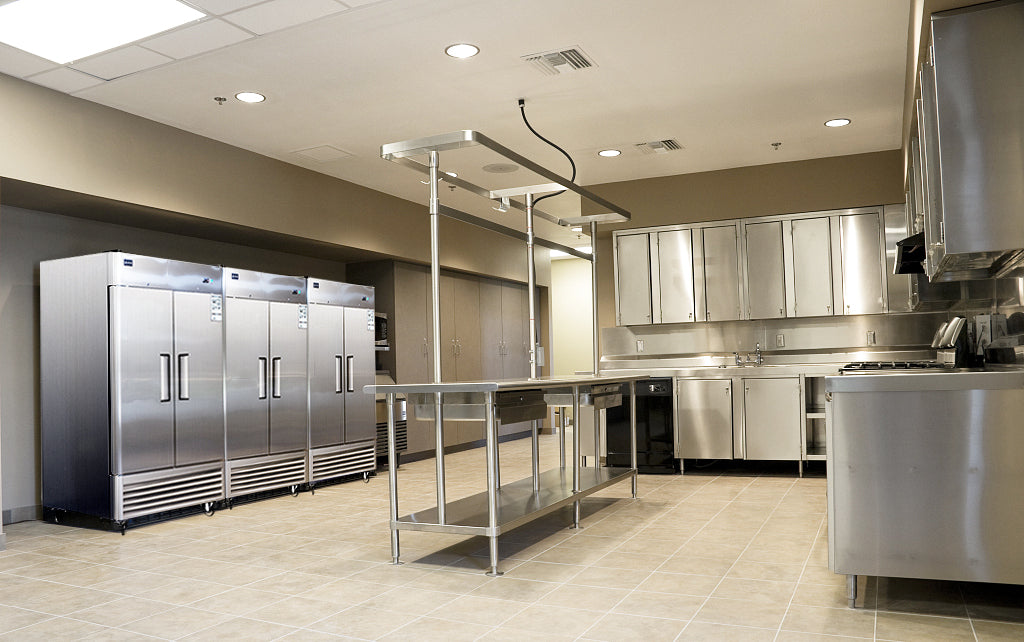Fix a Noisy Refrigerator from Aceland Restaurant Supplies & Equipment Store
How to Fix a Noisy Refrigerator
Is your refrigerator adding to the din of noise in your kitchen with humming, buzzing, or rattling? These disruptive sounds can be more than just an annoyance; they might signal underlying issues that, if ignored, could lead to expensive repairs. Whether you're dealing with a residential or commercial refrigerator, discover practical ways to restore peace to your kitchen, understand the usual culprits behind a noisy fridge, and learn how to keep this critical appliance running smoothly.
Most Common Reasons for a Noisy Refrigerator
Understanding the source of your refrigerator's noise is the first step in resolving it. Here are the most common culprits:
- Faulty Condenser Fan Motor: Causes loud humming or buzzing as it struggles to cool refrigerant.
- Evaporator Fan Malfunction: Produces squealing or grinding noises when off balance or failing.
- Clogged or Dirty Coils: Forces the fridge to work harder, leading to rattling or vibrating sounds.
- Loose Internal Components: Vibrations from unsecured screws, bolts, or panels can result in knocking or clicking.
Steps for Fixing a Noisy Refrigerator
Once you've pinpointed the noise source, use these steps to troubleshoot and fix your refrigerator:
-
Identify the Source of the Noise: Pinpoint whether the noise is coming from the back, bottom, or inside of the refrigerator.
- Back: Issues may involve the condenser fan, compressor, or defrost timer.
- Bottom: Vibrations or rattling may indicate a loose drain pan or uneven leveling.
- Inside: The evaporator fan could be malfunctioning or blocked.
- Secure Loose Components: Check for loose drain pans, panels, or screws that could be causing vibrations. Ensure the refrigerator is on a level surface to minimize excess noise.
-
Inspect and Clean the Fans
- Condenser Fan: Found at the back of most refrigerators, this fan can collect dirt or debris. Clean it with a soft brush or vacuum and check for worn parts.
- Evaporator Fan: Located inside the refrigerator or freezer, inspect for ice buildup or damage. Replace it if the fan is noisy or not spinning smoothly.
- Check the Compressor: Loud, continuous humming or rattling near the back may indicate compressor issues. Professional servicing is recommended for repairs or replacements.
- Clean the Coils: Dirty condenser coils—often located at the back or base—can overheat and cause excessive noise. Regular cleaning is essential to maintain proper airflow and efficiency. As commercial refrigeration expert Jim Van Vleet explains, "If you don't clean them and they get clogged up with dust, if air can't flow through, then it will not work correctly."
- Address Defrost Issues: Replace faulty defrost timers or heaters that may be causing ticking or scraping sounds.
When to Call for Professional Refrigerator Repair
Not all noise issues can be resolved with DIY fixes. If you encounter the following problems, contact a technician:
- Persistent Noise: If the noise persists despite your efforts, it may indicate a more serious issue with the compressor or cooling system.
- Compressor or Motor Trouble: Loud or unusual sounds coming from the compressor often point to a mechanical problem that requires professional repair or replacement.
- Refrigerant Leaks: If you notice ice buildup or temperature issues, a refrigerant leak may be the cause. A technician can properly diagnose and repair the leak.
Preventive Maintenance Tips for a Quieter Commercial Refrigerator
Preventive maintenance can help keep your refrigerator quiet and efficient for years to come. Follow these tips:
- Regular Cleaning: Clean the interior of your fridge at least once a month to prevent dirt, dust, and food buildup. Wipe down surfaces with mild soap and warm water, then dry thoroughly before placing items back inside. "One of the biggest issues is people not cleaning their fridge. It can lead to all kinds of problems” Van Fleet noted.
- Ensure Proper Leveling: A fridge that’s not level can produce vibrations and rattling. Use a carpenter’s level to check the fridge’s position, then adjust the leveling legs to keep the appliance stable and reduce noise.
- Clean the Condenser Coils: Dirty condenser coils force the fridge to work harder, increasing noise and reducing efficiency. Vacuum or brush off dust and debris from the coils every six months to keep your fridge running quietly.
Optimize Efficiency and Minimize Downtime
By understanding the most common causes of refrigerator noise and taking proactive steps to address them, you can ensure your appliance operates efficiently and quietly. For commercial kitchens, where reliability is key, regular maintenance and timely repairs can prevent disruptions and protect your bottom line.
Keep your kitchen running smoothly by staying ahead of potential problems. When in doubt, call a professional to handle more complex issues.
Frequently Asked Questions:
-
What type of noise is normal for a refrigerator?
Soft humming, fan sounds, and compressor clicks are normal. Loud buzzing or knocking may signal a problem.
-
How can I tell if a refrigerator noise is a serious issue?
Persistent or sudden loud noises often indicate issues like a failing compressor or blocked fan. Professional inspection is recommended.
-
Is it safe to operate a noisy refrigerator until it’s repaired?
Using a noisy fridge can worsen the issue and risk equipment failure. Address the problem promptly to maintain efficiency.
-
What should I do if my fridge makes a high-pitched whistling sound?
This is often caused by airflow issues or a faulty fan. Clean air vents and inspect the fan for obstructions.
-
Can a power surge cause my commercial fridge to become noisy?
Yes, power surges can damage components like the compressor. Have a technician inspect the unit for any lasting effects.
























